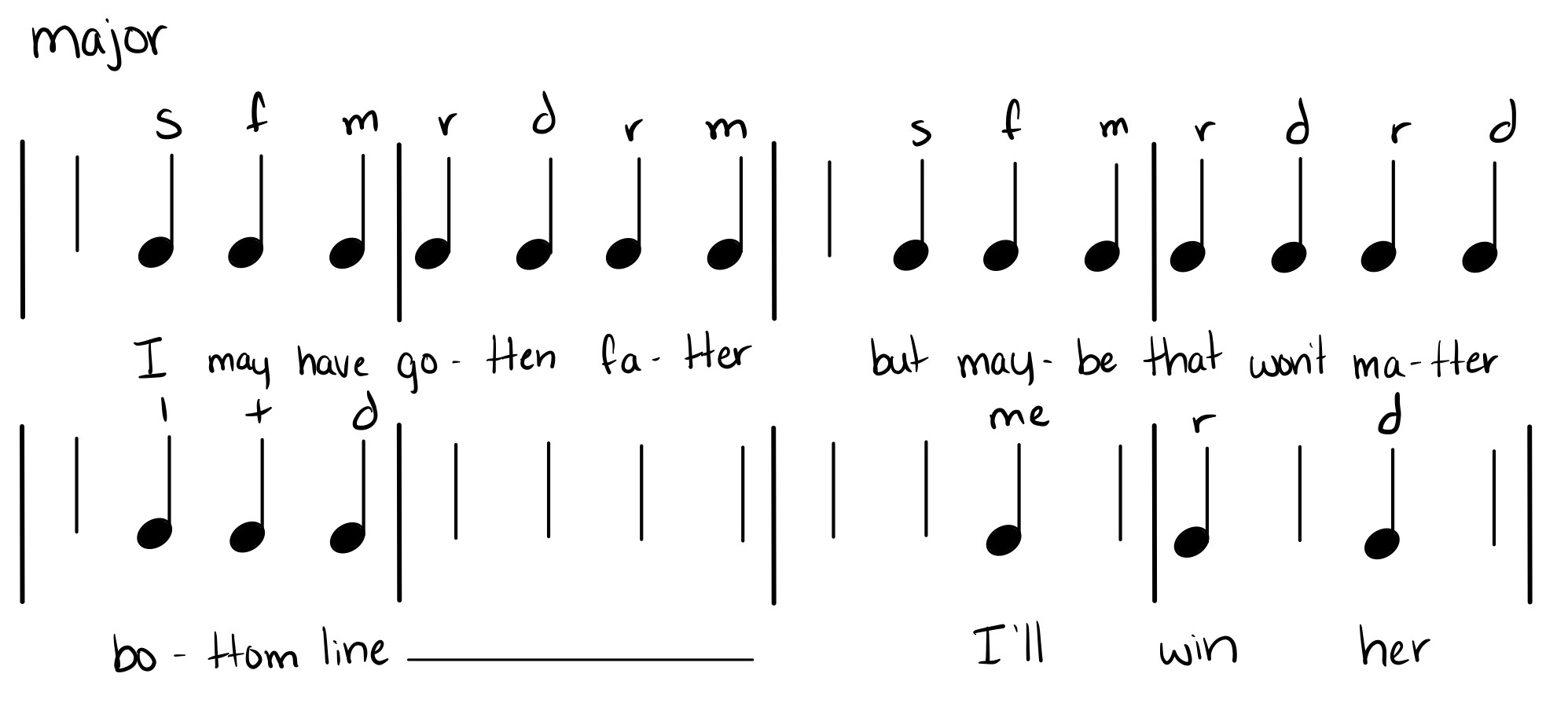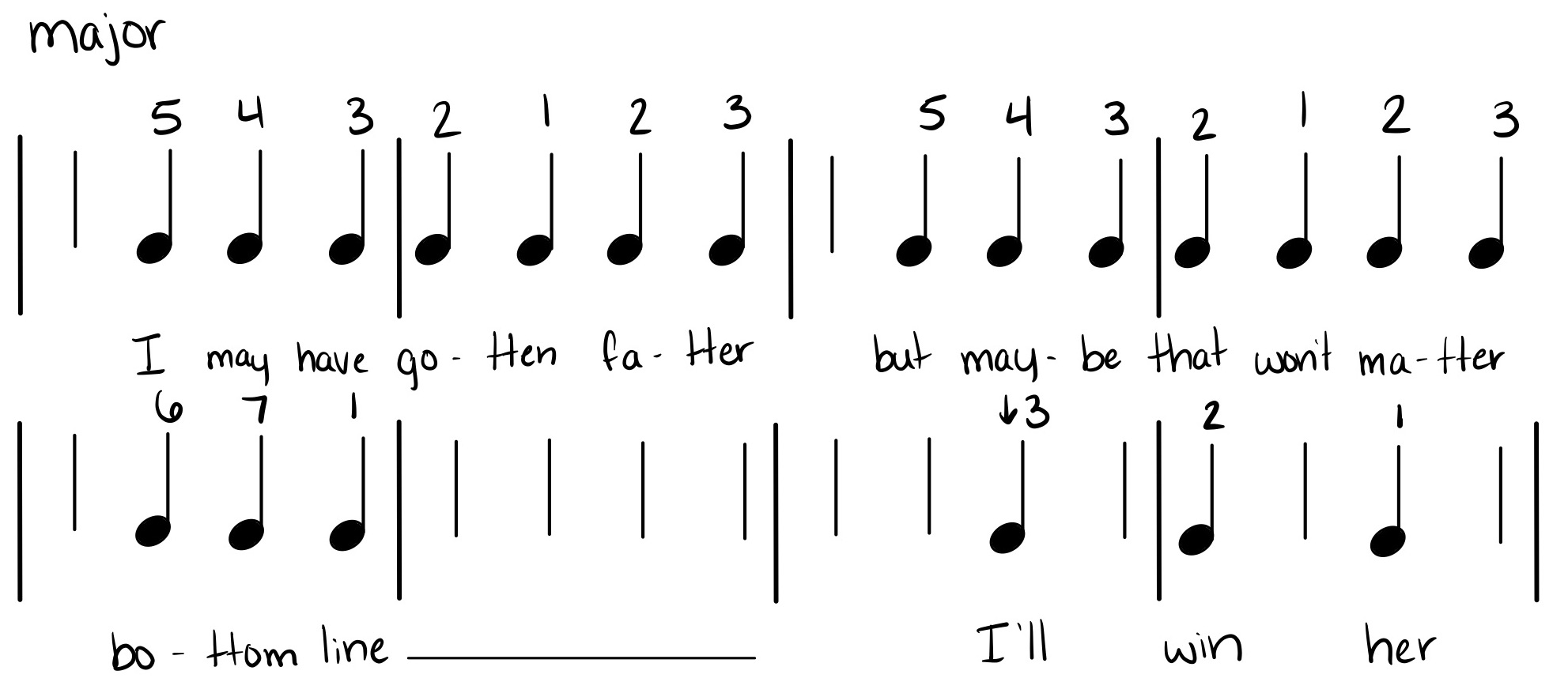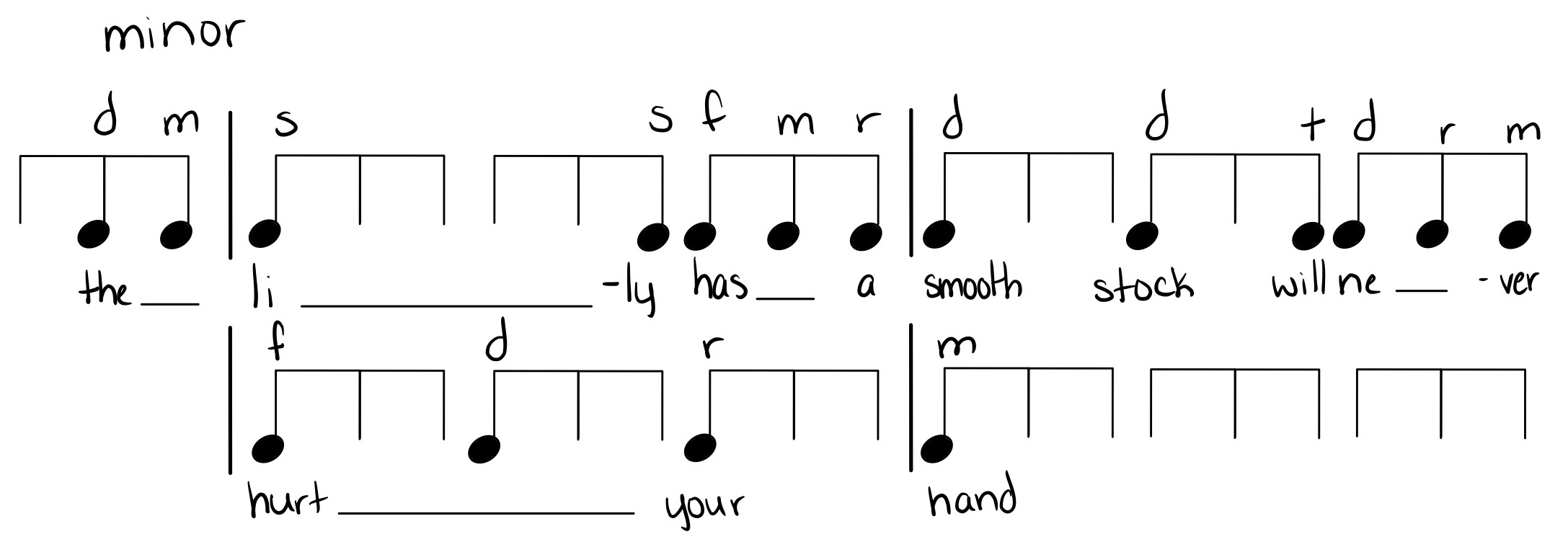Guide to Notehead Shorthand
Notehead shorthand, developed by pedagogue Jenine Lawson Brown, can be useful in tracking the relationships between rhythm and meter in a way that is helpful in writing rhythmic notation. Brown’s full description of the system can be found here, starting p. 85.
Rhythm
In notehead shorthand, every beat is represented by stems and beams as appropriate, showing how it divides. For example, each beat of a simple meter with 4 on the bottom (4/4, 3/4, 2/4, etc.) would be represented by a pair of beamed eighth note stems with no noteheads; each beat of a compound meter with 8 on the bottom (6/8, 9/8, 12/8, etc.) would be represented by a trio of beamed eighth note steps with no noteheads. Measures are shown with barlines, just as in traditional notation.
The first step of transcribing music using notation shorthand is to determine the meter, count the number of measures, and set up your barlines and placeholder stems/beams. Once this is set up, either listen again to the music or play it back in your head while tracking the beat division placeholders. Give the stems noteheads where a new note occurs.
Pitch
Scale degrees are typically represented either as Arabic numerals (1, 2, 3, etc.) or as moveable-do solfège syllables. For speed, when writing solfège syllables, we often simply use the first letter of the syllable. We can represent raised and lowered pitches with sharps or flats, with up and down arrows, or, in moveable-do solfège, by adding the relevant second letter of the syllable (“i” for raised, “e” for lowered, except “re,” which becomes “ra” when lowered). These can simply be written above or below the rhythmic protonotation/shorthand.
Example: Notation shorthand in simple meter
Solfège:

Scale Degrees:

Example: Notehead shorthand in compound meter
*note that the melody starts at 0:19 seconds
Solfège:

Scale Degrees:


